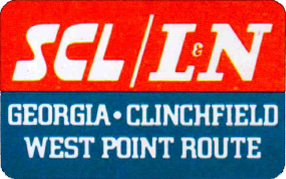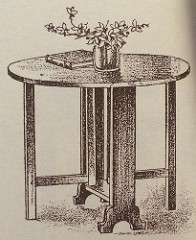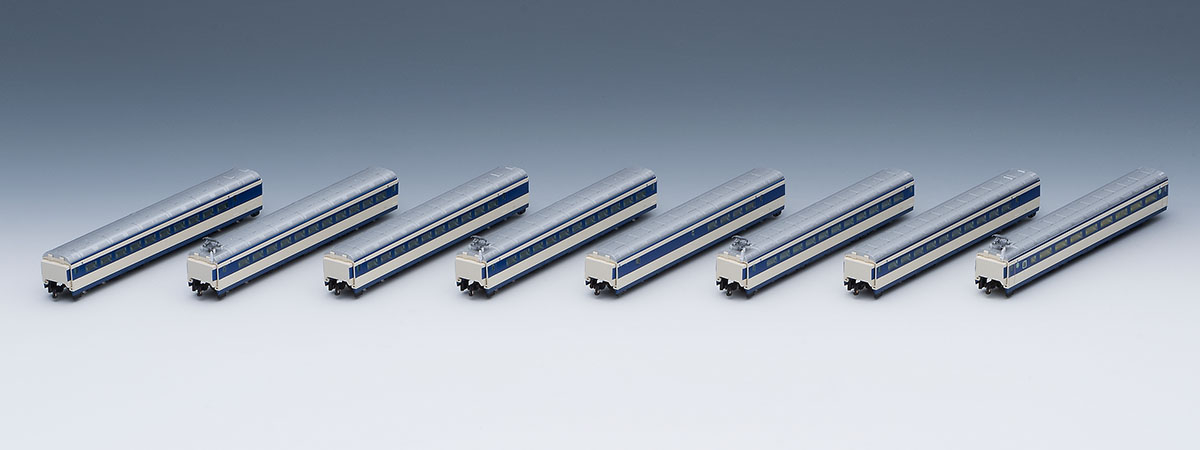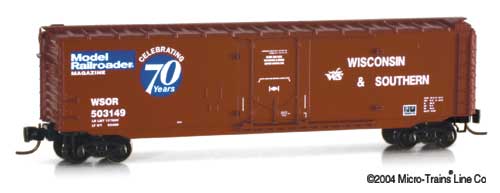Prototype History: While the 40-foot boxcar was a standard design, and it did come in different setups depending on the type of freight being transported, it was not large enough for efficient mass commodity transportation. The 50-foot boxcar made its first appearance in the 1930s and steadily grew in popularity over the years, which further improved redundancies by allowing for even more space within a given car. Today, the 50-footer remains the common boxcar size. After the second world war ended, and steel became once again readily available, steel became the go-to choice for construction of boxcars. Pullman Standard and ACF were some of the most prolific builders of these cars.
These cars came in many variations. For instance, double-doors became practical for large/wide loads, end-doors useful for very large lading such as automobiles, and interior tie-down equipment was helpful in keeping sensitive products from being damaged in-transit. In 1954 the Santa Fe developed its "Shock Control" (and later "Super Shock Control") technology for new boxcars with upgraded suspension systems to further improve the ride-quality and reduce the chance of damaging freight.
In the 1960s, the flush, "plug" style sliding door was introduced as an option that provides a larger door to ease loading and unloading of certain commodities. The tight-fitting doors are better insulated and allow a car's interior to be maintained at a more even temperature.
These cars came in many variations. For instance, double-doors became practical for large/wide loads, end-doors useful for very large lading such as automobiles, and interior tie-down equipment was helpful in keeping sensitive products from being damaged in-transit. In 1954 the Santa Fe developed its "Shock Control" (and later "Super Shock Control") technology for new boxcars with upgraded suspension systems to further improve the ride-quality and reduce the chance of damaging freight.
In the 1960s, the flush, "plug" style sliding door was introduced as an option that provides a larger door to ease loading and unloading of certain commodities. The tight-fitting doors are better insulated and allow a car's interior to be maintained at a more even temperature.
Road Name History:  To be truthful the Family Lines System was never actually an operating railroad, it was merely a marketing tactic which brought together the allying lines of the Louisville & Nashville, Clinchfield, Seaboard Coast Line, and a number of other smaller road (such as the Georgia Railroad, Atlanta & West Point Railroad, and Western Railway of Alabama otherwise referred to as the West Point Route). With this came a new livery (not unlike the later Seaboard scheme) applied to all with sub-lettering stenciled under locomotive cabs identifying the specific company. This marketing scheme was also short-lived, lasting only from 1972 until 1982 when these railroads merged together formally to create the Seaboard System (itself operating for only a few years).
To be truthful the Family Lines System was never actually an operating railroad, it was merely a marketing tactic which brought together the allying lines of the Louisville & Nashville, Clinchfield, Seaboard Coast Line, and a number of other smaller road (such as the Georgia Railroad, Atlanta & West Point Railroad, and Western Railway of Alabama otherwise referred to as the West Point Route). With this came a new livery (not unlike the later Seaboard scheme) applied to all with sub-lettering stenciled under locomotive cabs identifying the specific company. This marketing scheme was also short-lived, lasting only from 1972 until 1982 when these railroads merged together formally to create the Seaboard System (itself operating for only a few years).
The three main components of the System were the L&N, Clinchfield, and SCL. The L&N (the first component) was a railroad synonymous with the southern states; it served major cities from New Orleans and Memphis to St. Louis, Atlanta, and later Chicago. The L&N is also one of the few classic fallen flags to never have had its original chartered name change at any point throughout its history, serving its home state and the southeast for over 120 years. As the L&N itself disappeared into the Seaboard System in 1982 just a few years later the Seaboard itself would disappear into CSX Transportation.

The three main components of the System were the L&N, Clinchfield, and SCL. The L&N (the first component) was a railroad synonymous with the southern states; it served major cities from New Orleans and Memphis to St. Louis, Atlanta, and later Chicago. The L&N is also one of the few classic fallen flags to never have had its original chartered name change at any point throughout its history, serving its home state and the southeast for over 120 years. As the L&N itself disappeared into the Seaboard System in 1982 just a few years later the Seaboard itself would disappear into CSX Transportation.
Brand/Importer Information: Micro-Trains Line split off from Kadee Quality Products in 1990. Kadee Quality Products originally got involved in N-Scale by producing a scaled-down version of their successful HO Magne-Matic knuckle coupler system. This coupler was superior to the ubiquitous 'Rapido' style coupler due to two primary factors: superior realistic appearance and the ability to automatically uncouple when stopped over a magnet embedded in a section of track. The success of these couplers in N-Scale quickly translated to the production of trucks, wheels and in 1972 a release of ready-to-run box cars.
Micro-Trains Line Co. split off from Kadee in 1990 to form a completely independent company. For this reason, products from this company can appear with labels from both enterprises. Due to the nature of production idiosyncrasies and various random factors, the rolling stock from Micro-Trains can have all sorts of interesting variations in both their packaging as well as the products themselves. When acquiring an MTL product it is very important to understand these important production variations that can greatly enhance (or decrease) the value of your purchase.
Micro-Trains Line Co. split off from Kadee in 1990 to form a completely independent company. For this reason, products from this company can appear with labels from both enterprises. Due to the nature of production idiosyncrasies and various random factors, the rolling stock from Micro-Trains can have all sorts of interesting variations in both their packaging as well as the products themselves. When acquiring an MTL product it is very important to understand these important production variations that can greatly enhance (or decrease) the value of your purchase.
Item created by: CNW400 on 2022-03-24 10:47:42
If you see errors or missing data in this entry, please feel free to log in and edit it. Anyone with a Gmail account can log in instantly.
If you see errors or missing data in this entry, please feel free to log in and edit it. Anyone with a Gmail account can log in instantly.









